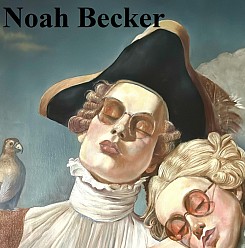Whitehot Magazine
December 2025
"The Best Art In The World"
"The Best Art In The World"
December 2025
Lara Pan Interviews Artist Minjung Kim
 Installation view Minjung Kim ©Hill Art Foundation. Photo by Matthew Herrmann.
Installation view Minjung Kim ©Hill Art Foundation. Photo by Matthew Herrmann.
Through February 2021
By LARA PAN, December 2020
LARA PAN: This is your first survey exhibition at the Hill Foundation in New York City. I’ve been following your work for quite a long time now, and what I like the most about it is its sense of evolution. It seems to follow a trajectory wherein the new pieces consist in variations on previous works, and have evolved out of them by introducing new elements into them. For example, if we consider “Tide” from 2017 and “The Corner,” which is more recent, the transition is brilliant. It feels almost like a musical composition. How do you feel about your first survey?
MINJUNG KIM: Survey shows are always useful because you can see an evolution of your own works and thereby reflect on the course of your development as an artist. All works together lead to your next future step.
LP: In light of my comparison of your creative process to that of a musical composer, I’d like to ask, how much is music relevant to your work, or is it at all?
MK: Music is a very important element to my work. I listen to a lot music, especially percussion and string instruments. I often imagine how I could imprint music on the paper I’m working with. And I think my working process can be compared to minimal music. Music is such an enriching part of our lives! It does not occupy physical space, but it does render in us the most powerful emotions.
LP: One of the most compelling aspects of your work is how it draws on influences of the Arte Povera movement and at the same time maintains a perfect balance with the traditional Korean material of hanji .It’s a bit daring to talk about Arte Povera, but to be precise I am referring to your process of layering hanji paper. We can find this type of layering and use of diverse materials in Arte Povera. Can you tell me more about the use of layers in your work and your influences in Arte Povera?
MK: As I lived and studied in Italy for more than 20 years, of course I was immersed in Arte Povera. I was less impressed by their poor material than I was by the beauty of their textures and compositions. Only I use hanji paper which is not poor material, but rather very noble and delicate, typically used by scholars and artists. I feel that I do not use material for my art, but instead, that I serve material-paper. I try to deeply understand the character of paper and I want to construct forms with this fragile element.
 Installation view Minjung Kim ©Hill Art Foundation. Photo by Matthew Herrmann.
Installation view Minjung Kim ©Hill Art Foundation. Photo by Matthew Herrmann.
LP: You have a very special way of manipulating hanji paper. I would love to hear more about this process.
MK: For hanji, the paper has a special character. In general it is very thin and transparent, and very fragile. But at the same time it could last for a millennium because it is made of fibers from mulberry trees. From an early time I’ve used ink on the paper. It was an interesting expression of lines and I burned the paper to make a more natural line. Then I used those lines for drawing. I do collages of these lines to make eternal forms because the lines are made by fire. And I use simple techniques to alter the paper in order to conserve most of its own nature. Paper itself is the best minimal art.
LP: How has your experience of isolation been due to the pandemic? Have these crazy times affected your creativity?
MK: I feel hopeless and helpless during this pandemic period. Invisible viruses can influence our lives in a devastating way, which reminds us how fragile life is. I worked a lot during this period anyway, though.
LP: I also love to look optimistically towards the future. So tell me, when is your next exhibition, and what you are working on now?
MK: In February 2021 I will have a solo show in the Gallery Hyundai in Seoul, and in September 2021 I’ll have one in the Galerie Commeter in Hamburg. In this period of my work I am observing the movement of water. WM

Lara Pan
Lara Pan is an independent curator,writer and researcher based in New York. Her research focuses on the intersection between art, science, technology and paranormal phenomena.
view all articles from this author







